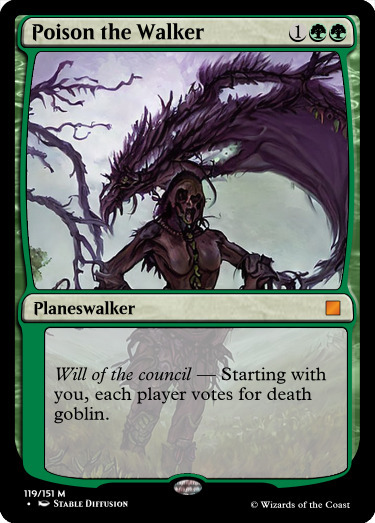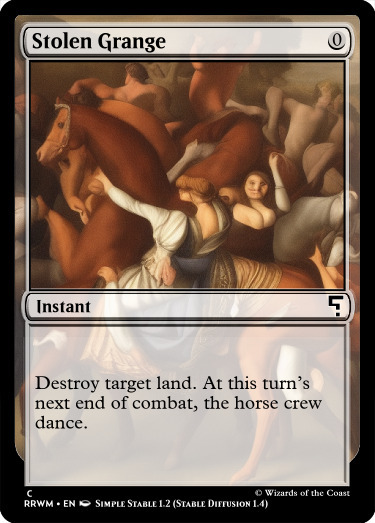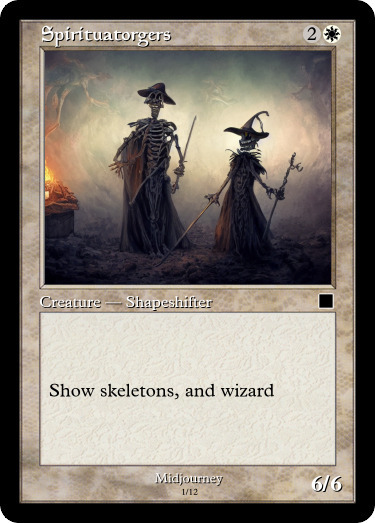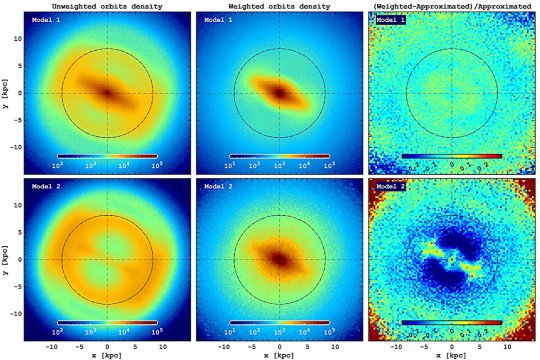#innovative modeling techniques
Explore tagged Tumblr posts
Text
Exploring Material Choices for Your Models

The right material can make all the difference in model-making. From lightweight foam to durable metals, explore the various materials we use in our scale modeling and 3D printing services, and find out how each choice enhances your project.
#scale modeling#3d visualization#3d printing services#architectural models#custom prototypes#rapid prototyping#architectural design#model making#visualization techniques#virtual reality design#product prototyping#creative design solutions#innovative modeling techniques#model design services#professional 3d modeling
1 note
·
View note
Text

Post-Training Pioneers: The Tulu 3 Project’s Contributions to LLM Development
The intricacies of large language models (LLMs) are meticulously explored in the conversation between Nathan Lambert and the host, with a particular focus on the Tulu 3 project and its innovative post-training techniques. This project, spearheaded by the Allen Institute, seeks to enhance the performance of the LLaMA 3.1 model, prioritizing transparency and open-sourcing in the process. By employing a multifaceted approach, the project navigates the complexities of LLM development, shedding light on both the challenges and opportunities inherent in this pursuit.
The methodology underlying the Tulu 3 project is characterized by a layered strategy, commencing with instruction tuning via Supervised Fine-Tuning (SFT). This phase involves the judicious integration of capability-focused datasets, designed to augment the model's performance without compromising its versatility across a range of downstream tasks. Furthermore, the incorporation of general chat data enhances the model's broader language understanding, underscoring the project's commitment to holistic development.
Preference tuning, facilitated through both Direct Policy Optimization (DPO) and Reinforcement Learning (RL), constitutes the subsequent layer of the project's methodology. Notably, the utilization of LLMs as judges, necessitated by budgetary constraints, introduces a distinct bias profile that diverges from the outcomes associated with human judges. This divergence prompts crucial inquiries into the potential implications for fairness in downstream applications, highlighting the need for nuanced evaluation methodologies.
The Tulu 3 project's emphasis on transparency and open-sourcing embodies a paradigmatic shift in AI research, one that prioritizes communal learning and collaborative advancement. By making its data and methods openly accessible, the project catalyzes a broader conversation about the future of LLM development, encouraging the coalescence of diverse perspectives and expertise. This inclusive approach is poised to democratize access to cutting-edge AI technologies, potentially mitigating the disparities between open and closed research environments.
The project's findings and methodologies also underscore the escalating complexity of post-training techniques, which now extend far beyond the realm of simple SFT and DPO. This evolution necessitates a concomitant shift in how researchers approach LLM development, with a heightened emphasis on adaptability, innovation, and interdisciplinary collaboration. Future research directions, including the fine-tuning of instruct models for specialized applications and the systematic exploration of preference tuning's iterative potential, promise to further enrich the landscape of LLM research.
The Tulu 3 project serves as a beacon for the transformative potential of open, collaborative AI research, illuminating pathways for innovation that prioritize both technical excellence and societal responsibility. As the AI community continues to navigate the intricacies of LLM development, the lessons gleaned from this project will remain integral to the pursuit of more sophisticated, equitable, and transparent AI solutions.
Nathan Lambert: Post-training Techniques for Large Language Models (The Cognitive Revolution, November 2024)
youtube
Tuesday, November 26, 2024
#artificial intelligence#ai research#large language models#llm development#post-training techniques#natural language processing#nlp#open source ai#transparency in ai#ai innovation#language model fine-tuning#reinforcement learning#deep learning#ai collaboration#accessible ai#interview#ai assisted writing#machine art#Youtube
3 notes
·
View notes
Text
CMU Researchers Introduce AdaTest: Enhancing the Auditing of Large Language Models through Advanced Human-AI Collaboration Techniques
📢 Exciting news in the world of AI auditing! CMU researchers have just introduced AdaTest++, an advanced auditing tool for Large Language Models (LLMs). 🚀 AdaTest++ is designed to streamline the auditing process, enhance sensemaking, and improve communication between auditors and LLMs. With features like prompt templates, test organization into schemas, top-down and bottom-up exploration, and validation and refinement, AdaTest++ has proven itself to be remarkably effective in uncovering unexpected model behaviors and promoting transparency in AI systems. If you're interested in learning more about this innovative tool and its impact on the auditing of LLMs, check out our latest blog post, "Auditing Large Language Models with AdaTest++". Click on the link below to jump right in: 📝 Read the blog post here: [CMU Researchers Introduce AdaTest++](https://ift.tt/M2rmq9b) Stay up-to-date on the latest advancements in AI and auditing by following our page. Don't miss out on this game-changing tool! 🌟 #AIauditing #LLMs #AdaTest++ List of Useful Links: AI Scrum Bot - ask about AI scrum and agile Our Telegram @itinai Twitter - @itinaicom
#itinai.com#AI#News#CMU Researchers Introduce AdaTest++: Enhancing the Auditing of Large Language Models through Advanced Human-AI Collaboration Techniques#AI News#AI tools#Innovation#itinai#LLM#Madhur Garg#MarkTechPost#Productivity CMU Researchers Introduce AdaTest++: Enhancing the Auditing of Large Language Models through Advanced Human-AI Collaboration T
0 notes
Text
The Connection Between Basic Science and Clinical Research in Improving Health Outcomes
Explanation of the topic Medical research is a broad field that encompasses a wide range of studies and activities aimed at advancing knowledge and improving health outcomes. From basic science research that explores the fundamental mechanisms of disease, to clinical research that tests new treatments in real-world settings, medical research plays a crucial role in shaping the future of…

View On WordPress
#basic science#biology of diseases#breakthroughs in treatment#case-control studies#cellular biology#clinical research#diagnosis and treatment#diagnostic tools#discovery-based research#disease mechanisms#experimental models#factors that influence treatment outcomes#fundamental research#genetics and genomics#health outcomes#human subjects#improved health outcomes.#innovative techniques#interdisciplinary collaboration#interventions#laboratory findings#medical research#natural history of disease#neurological disorders#new targets for therapy#observational studies#patient care#preventive strategies#public health#real-world settings
0 notes
Note
NOT asking this as a gotcha, I'm 100% sincere, can you point to pieces of AI art that you feel are interesting uses of the medium? Because I'm not philosophically opposed to it, but at the same time I've never seen anything that wasn't naked bandwagon shilling by the same people who pushed NFTs
sure! i think a classic of the medium is secret horses

(i sadly don't know who made it, but i've seen it around and fallen in love). this is everything AI art should be, imo, taking advantage of the liminal dreamlike quality of the medium and using titling and framing to say something about the piece that wouldn't exist if it was presented on its own. secret horses...
my favourite band, everything everything, released an album last year that made use of AI generation, both for the album's art and for small portions of the lyrics (interestingly, they've refused to say which lyrics are AI written and which are human written, which adds another layer of intrigue to me -- the only lyric that they've confirmed is AI generated is the title of 'software greatman', which forms the haunting, powerful chorus of the song that gets deconstructed into electronic incoherence. other highlights include the album art, part burning skyscape, part incomprehensible machine. what is the machine? is it a camera? a monitor? a train? does it matter?

and finally from this album cycle i adore the hallucinogenic exuberance of their video for i want a love like this:
youtube
in terms of dedicated artists working primarily within the AI medium, i'm a huge fan of @reachartwork, a really innovative artist who keeps blowing me away with evocative and interesting pieces and pioneer in ethical and cooperative AI art techniques. i'm an especially big fan of their grotesque and uncomfortable 'tooth machine' series:


as well as their desolate, bleak, alien landscapes:


(hole in the sky / river lethe )
and their project, the @infiniteartmachine, a model that produces art based upon algorithmically generated prompots -- effectively a long-term art piece.
finally, i'm a very very big fan of @roborosewater-masters, a bot that makes AI-created magic the gathering cards. this might not parse as 'art' to some people, or be interesting to analyze as such, but to me, someone obsessed with games and game studies, i think that the mix of synctactically correct magic the gathering rules text and abrupt non sequitur makes for really striking and funny pieces that prompt me to think about what the limits of games and gaming are




these are just the artists and pieces i can name off the top of my head, but i hope that they're representative of what generative art has to offer when it's not being done by grifters chasing the lowest common denominator.
2K notes
·
View notes
Text
When prophecy fails, election polling edition

In Canto 20 of Inferno, Dante confronts a pit where the sinners have had their heads twisted around backwards; they trudge, naked and weeping, through puddles of cooling tears. Virgil informs him that these are the fortunetellers, who tried to look forwards in life and now must look backwards forever.
In a completely unrelated subject, how about those election pollsters, huh?
Writing for The American Prospect, historian Rick Perlstein takes a hard look at characteristic failure modes of election polling and ponders their meaning:
https://prospect.org/politics/2024-09-25-polling-imperilment/
Apart from the pre-election polling chaos we're living through today, Perlstein's main inspiration is W Joseph Campbell 2024 University of California Press book, Lost in a Gallup: Polling Failure in US Presidential Elections:
https://www.ucpress.edu/books/lost-in-a-gallup/paper
In Campbell's telling, US election polling follows a century-old pattern: pollsters discover a new technique that works spookily well..for a while. While the new polling technique works, the pollster is hailed a supernaturally insightful fortune-teller.
In 1932, the Raleigh News and Observer was so impressed with polling by The Literary Digest that they proposed replacing elections with Digest's poll. The Digest's innovation was sending out 20,000,000 postcards advertising subscriptions and asking about presidential preferences. This worked perfectly for three elections – 1924, 1928, and 1932. But in 1936, the Digest blew it, calling the election for Alf Landon over FDR.
The Digest was dethroned, and new soothsayers were appointed: George Gallup, Elmo Roper and Archibald Crossler, who replaced the Digest's high-volume polling with a new kind of poll, one that sought out a representative slice of the population (as Perlstein says, this seems "so obvious in retrospect, you wonder how nobody thought of it before").
Representative polling worked so well that, three elections later, the pollsters declared that they could predict the election so well from early on that there was no reason to keep polling voters. They'd just declare the winner after the early polls were in and take the rest of the election off.
That was in 1948 – you know, 1948, the "Dewey Defeats Truman" election?
https://en.wikipedia.org/wiki/Dewey_Defeats_Truman
If this sounds familiar, perhaps you – like Perlstein – are reminded of the 2016 election, where Fivethirtyeight and Nate Silver called the election for Hillary Clinton, and we took them at their word because they'd developed a new, incredibly accurate polling technique that had aced the previous two elections.
Silver's innovation? Aggregating state polls, weighting them by accuracy, and then producing a kind of meta-poll that combined their conclusions.
When Silver's prophecy failed in 2016, he offered the same excuse that Gallup gave in 1948: when voters are truly undecided, you can't predict how they'll vote, because they don't know how they'll vote.
Which, you know, okay, sure, that's right. But if you know that the election can't be called, if you know that undecided voters are feeding noise into the system whenever you poll them, then why report the polls at all? If all the polling fluctuation is undecided voters flopping around, not making up their mind, then the fact that candidate X is up 5 points with undecided means nothing.
As the finance industry disclaimer has it, "past performance is no guarantee of future results." But, as Perlstein says, "past performance is all a pollster has to go on." When Nate Silver weights his model in favor of a given poll, it's based on that poll's historical accuracy, not its future accuracy, because its future accuracy can't be determined until it's in the past. Like Dante's fortune-tellers, pollsters have to look backwards even as they march forwards.
Of course, it doesn't help that in some cases, Silver was just bad at assessing polls for accuracy, like when he put polls from the far-right "shock pollster" Trafalgar Group into the highly reliable bucket. Since 2016, Trafalgar has specialized in releasing garbage polls that announce that MAGA weirdos are way ahead, and because they always say that, they were far more accurate than the Clinton-predicting competition in 2016 when they proclaimed that Trump had it in the bag. For Silver, this warranted an "A-" on reliability, and that is partially to blame for how bad Silver's 2020 predictions were, when Republicans got pasted, but Trafalgar continued to predict a Democratic wipeout. Silver's methodology has a huge flaw: because Trafalgar's prediction history began in 2016, that single data-point made them look pretty darned reliable, even though their method was to just keep saying the same thing, over and over:
https://www.ettingermentum.news/p/the-art-of-losing-a-fivethirtyeight
Pollsters who get lucky with a temporarily reliable methodology inevitably get cocky and start cutting corners. After all, polling is expensive, so discontinuing the polls once you think you have an answer is a way to increase the enterprise's profitability. But, of course, pollsters can only make money so long as they're somewhat reliable, which leads to a whole subindustry of excuse-making when this cost-cutting bites them in the ass. In 1948, George Gallup blamed his failures on the audience, who failed to grasp the "difference between forecasting an election and picking the winner of a horse race." In 2016, Silver declared that he'd been right because he'd given Trump at 28.6% chance of winning.
This isn't an entirely worthless excuse. If you predict that Clinton's victory is 71.4% in the bag, you are saying that Trump might win. But pollsters want to eat their cake and have it, too: when they're right, they trumpet their predictive accuracy, without any of the caveats they are so insistent upon when they blow it:
https://www.youtube.com/watch?v=1jDlo7YfUxc
There's always some excuse when it comes to the polls: in 1952, George Gallup called the election a tossup, but it went for Eisenhower in a landslide. He took out a full-page NYT ad, trumpeting that he was right, actually, because he wasn't accounting for undecided voters.
Polling is ultimately a form of empiricism-washing. The pollster may be counting up poll responses, but that doesn't make the prediction any less qualitative. Sure, the pollster counts responses, but who they ask, and what they do with those responses, is purely subjective. They're making guesses (or wishes) about which people are likely to vote, and what it means when someone tells you they're undecided. This is at least as much an ideological project as it is a scientific one:
https://prospect.org/blogs-and-newsletters/tap/2024-09-23-polling-whiplash/
But for all that polling is ideological, it's a very thin ideology. When it comes to serious political deliberation, questions like "who is likely to vote" and "what does 'undecided' mean" are a lot less important than, "what are the candidates promising to do?" and "what are the candidates likely to do?"
But – as Perlstein writes – the only kind of election journalism that is consistently, adequately funded is poll coverage. As a 1949 critic put it, this isn't the "pulse of democracy," it's "its baby talk."

Today, Tor Books publishes VIGILANT, a new, free LITTLE BROTHER story about creepy surveillance in distance education. It follows SPILL, another new, free LITTLE BROTHER novella about oil pipelines and indigenous landback.

If you'd like an essay-formatted version of this post to read or share, here's a link to it on pluralistic.net, my surveillance-free, ad-free, tracker-free blog:
https://pluralistic.net/2024/09/26/dewey-beats-truman/#past-performance-is-no-guarantee-of-future-results
#pluralistic#prognostication#polling#uspoli#elections#pollsters#fivethirtyeight#nate silver#george gallup#rick perlstein#history#past performance is no guarantee of future results#W Joseph Campbell#Lost in a Gallup
153 notes
·
View notes
Text
Speed of Science🧬💻💌
I'm dating a STEM girlie and you're not (F1 Edition)



a/n: and im baaaaaacccckkkkk (like anyone even missed me lmao) with the long overdue request! life of a postgrad StEm girlie here and the struggle is really realll af. but besides that, I'm writing this down as a headcanon for the drivers requested on this poll i had posted long back here. I've always wondered how there's soo minimal povs/ocs where they are a scientific researcher, analyst, etc. sooo i dedicate this one to all the STEM F1 girlies out theree <33
alsoo quick shoutout to my girlieee @smoooothoperator for inspiring and motivating me to get back at writing!🥹🫶🏼 check out her lastest ongoing work 'What Was I Made For? ' its amazing and thats a FACT!! do check her works! its absolutely amazing❤️
check out my works: until i found you masterlist | other works

Scientific Art Illustrator - Charles Leclerc
As a Scientific Art Illustrator, you specialize in creating visually captivating and scientifically accurate illustrations that depict complex biological, astronomical, or technological subjects.
Charles first discovered you through your works at an exhibition where their stunning illustrations of Formula 1 cars caught his eye. Impressed by their attention to detail and artistic talent, they struck up a conversation about their mutual love for precision and creativity.
During a peaceful weekend afternoon, Charles suggests a spontaneous visit to a local art supply store. Excitedly exploring aisles stocked with vibrant paints, fine brushes, and specialized papers, the two of you engage in discussions about artistic techniques and innovative tools. Amidst laughter and shared enthusiasm for creativity, you bond over your mutual appreciation for the intricacies of art and science, making the afternoon a cherished memory of their shared passions.
After being away from home during race season, Charles always finds a framed series of sketches by you for the races you couldn't make it, capturing his most memorable racing moments. Each sketch is intricately detailed, depicting not only the speed and intensity of the races but also the emotions and determination etched on Charles' face. Touched by the thoughtful gesture, Charles hangs the sketches in his study, a constant reminder of your support and admiration for his passion.
...

Data Scientist - Lando Norris
A Data Scientist specializes in analyzing large volumes of data using statistical methods and machine learning techniques to extract insights and make data-driven decisions.
You and Lando first connected through a mutual fascination with racing data at a technology symposium focused on sports analytics. Your presentation on advanced predictive modelling in motorsports caught Lando's attention for its innovative approach to enhancing race strategies.
During a cosy evening at home, Lando playfully challenges you to a friendly data analysis competition using real-time telemetry from previous races. Their banter and shared excitement over dissecting racing data create a lighthearted and memorable bonding experience.
You two would watch old races and analyze historical racing data together, playfully debating optimal pit stop strategies and analyzing driver performance trends, their shared passion for racing and data fostering a deep connection and mutual admiration.
...

Oceanographer/Marine Biologist - Oscar Piastri
An Oceanographer or Marine Biologist studies marine life, ecosystems, and ocean processes to understand and protect marine environments and resources.
You and Oscar crossed paths during a research expedition to study coral reefs in a remote location. Your expertise in marine biology and passion for conservation impressed Oscar, sparking their connection.
Amidst the hectic F1 season, Oscar surprises you with a weekend getaway to a coastal retreat, where they explore tide pools and participate in a beach cleanup together, reaffirming their commitment to environmental stewardship.
You gave Oscar a custom-made charm bracelet featuring miniature charms of marine animals they've discussed during their beach walks and conservation talks. Each charm represents a meaningful moment in their relationship, from their first discussion about oceanography to their shared admiration for marine life. Oscar wears the bracelet during race weekends as a reminder of you and all the love and support you give, both on and off the track.
...

Mechanical Engineer - Daniel Riccardo
You are a passionate Mechanical Engineer, specializing in advanced automotive design and performance optimization.
Daniel first encountered you at a technical conference organized by one of the team sponsors where you presented groundbreaking research on aerodynamic innovations that caught his attention.
Often, while you meticulously draft engineering schematics at their home office, he makes sure that you have your "engineering emergency kit" beside your workstation, which is a tray of snacks and their favourite coffee – ensuring they're fueled for their late-night brainstorming sessions. For when he's away for races, he stacks them up with small cute notes.
Before Daniel heads to a crucial race, you surprise him with a meticulously crafted miniature replica of his race car, complete with detailed decals and a personalized message of encouragement engraved on the base. Touched by the thoughtful gesture, Daniel proudly displays it in his motorhome, a reminder of the reader's unwavering support both on and off the track.
...

Statistician - George Russell
A Statistician specializes in collecting, analyzing, and interpreting numerical data to help organizations and individuals make informed decisions.
You and Russell first crossed paths during a university seminar on advanced statistical modeling in sports. Your insightful analysis of Formula 1 race data caught George's attention, sparking a lively discussion that led to mutual admiration for each other's analytical skills and shared passion for racing statistics.
During a particularly demanding race weekend, the reader surprises George with a meticulously prepared statistical analysis report highlighting his strengths and areas for improvement based on recent race data. This thoughtful gesture boosts George's confidence and motivation, showing the reader's support in his pursuit of excellence.
During a weekend getaway, you guys stumble upon a local go-kart track. George, always up for a challenge, suggests they have a friendly race. Knowing George's competitive spirit, you secretly calculate his optimal strategy and surprise him by winning with a perfectly executed last-minute overtaking maneuver. George is impressed by the your strategic thinking and playfulness, and they share a lighthearted and joyous moment celebrating their shared love for racing and friendly competition.
...

Astrophysicist - Logan Sargeant
An Astrophysicist studies the physical properties, behavior, and evolution of celestial objects such as stars, planets, galaxies, and the universe as a whole, using principles of physics and astronomy.
Logan and you first crossed paths during an expedition to study a rare astronomical event—a comet passing close to Earth. Both passionate about astrophysics, you found yourselves sharing a telescope at a remote observatory, marveling at the comet's beauty and discussing its celestial significance late into the night. Their shared awe and intellectual connection sparked a mutual admiration that grew into a deep bond over their shared passion for exploring the wonders of the cosmos.
During a quiet evening at home, Logan excitedly shows you a new telescope he acquired for stargazing during race weekends, expressing his eagerness to learn more about the cosmos together and sharing their enthusiasm for both racing and astrophysics in equal measure.
Before a critical race weekend, the reader surprises Logan with a personalized star chart that maps out the night sky above the upcoming race venue during the race weekend. Each star on the chart is marked with a heartfelt message of encouragement, reminding Logan of their unwavering support and belief in his abilities on and off the track. Touched by the thoughtful gesture, Logan treasures the star chart as a symbol of the reader's love and encouragement throughout his racing career.
...

Climate Scientist - Lance Stroll
A Climate Scientist studies climate patterns, environmental changes, and their impacts on Earth's ecosystems, using data analysis and modeling to understand and address global climate challenges.
Lance crossed paths with you at an eco-friendly racing event where Lance was advocating for sustainable practices in motorsport. Being a respected climate scientist, you caught Lance's attention with your insightful presentation on the environmental impact of racing and innovative solutions for reducing carbon footprints in the sport. Their shared passion for sustainability sparked an immediate connection and admiration for each other's dedication to making a positive impact on the environment.
One weekend, Lance surprises you with a homemade dinner featuring sustainably sourced ingredients, proudly showcasing his culinary skills while discussing ways to reduce your carbon footprint. His earnest commitment to sustainability and your shared vision for a healthier planet melts your heart, making this a cherished moment you both treasure.
You, being deeply involved in climate science, often spends late nights analyzing data or writing research papers. One evening, Lance bring him a cozy blanket and a mug of your favorite hot beverage, quietly sitting beside him as he works. You look up from your laptop, touched by his thoughtfulness, and pulls him into a warm embrace, grateful for his unwavering support and understanding of your demanding but vital work.
...
taglist: @lndonrris @thatgirlmj @lwstuff @dannyramirezwife-f1dump @moonypixel tysm for your suggestions! apologies on taking this long to write😅🫶🏼
a/n: hope y'all enjoyed reading this! this was my first time writing a headcanon and for f1 drivers beside charles and lando so hope i did justice to all.
i'm being wanting to read some good domestic bliss, sweet, adorable and lovey dovey blurbs, fics of lando (i talked abt it here) soo maybe i'll work on some drafts at some point cause i'm currently in the middle of project work of my masters degree soo don't know when i'll be posting soo until next time, see yaaa and going back to read mode 👋💓✨️
check out my works: until i found you masterlist | other works
#f1 x reader#f1 headcanons#charles leclerc#charles leclerc x reader#lando norris#lando norris x reader#oscar piastri#oscar piastri x reader#daniel ricciardo#daniel ricciardo x reader#george russell#george russel x reader#logan sargeant#logan sargent x reader#lance stroll#lance stroll x reader#f1 driver x you#f1 driver x reader#formula one
313 notes
·
View notes
Text
An innovation that propelled Britain to become the world’s leading iron exporter during the Industrial Revolution was appropriated from an 18th-century Jamaican foundry, historical records suggest. The Cort process, which allowed wrought iron to be mass-produced from scrap iron for the first time, has long been attributed to the British financier turned ironmaster Henry Cort. It helped launch Britain as an economic superpower and transformed the face of the country with “iron palaces”, including Crystal Palace, Kew Gardens’ Temperate House and the arches at St Pancras train station. Now, an analysis of correspondence, shipping records and contemporary newspaper reports reveals the innovation was first developed by 76 black Jamaican metallurgists at an ironworks near Morant Bay, Jamaica. Many of these metalworkers were enslaved people trafficked from west and central Africa, which had thriving iron-working industries at the time. Dr Jenny Bulstrode, a lecturer in history of science and technology at University College London (UCL) and author of the paper, said: “This innovation kicks off Britain as a major iron producer and … was one of the most important innovations in the making of the modern world.” The technique was patented by Cort in the 1780s and he is widely credited as the inventor, with the Times lauding him as “father of the iron trade” after his death. The latest research presents a different narrative, suggesting Cort shipped his machinery – and the fully fledged innovation – to Portsmouth from a Jamaican foundry that was forcibly shut down.
[...]
The paper, published in the journal History and Technology, traces how Cort learned of the Jamaican ironworks from a visiting cousin, a West Indies ship’s master who regularly transported “prizes” – vessels, cargo and equipment seized through military action – from Jamaica to England. Just months later, the British government placed Jamaica under military law and ordered the ironworks to be destroyed, claiming it could be used by rebels to convert scrap metal into weapons to overthrow colonial rule. “The story here is Britain closing down, through military force, competition,” said Bulstrode. The machinery was acquired by Cort and shipped to Portsmouth, where he patented the innovation. Five years later, Cort was discovered to have embezzled vast sums from navy wages and the patents were confiscated and made public, allowing widespread adoption in British ironworks. Bulstrode hopes to challenge existing narratives of innovation. “If you ask people about the model of an innovator, they think of Elon Musk or some old white guy in a lab coat,” she said. “They don’t think of black people, enslaved, in Jamaica in the 18th century.”
851 notes
·
View notes
Text





Pat McGrath’s Natal Chart Analysis: Beauty IS a ritual or an exploration of the 4th and 8th houses
I’ve always loved Pat’s work as a makeup enthusiast and was curious to look at her chart. I was shocked that was a 4th and 8th houser because I associated makeup with 5th, 10th, or 11th house energies. The 4th and 8th houses have heavy spiritual energy to me, but when I thought more about it Beauty is both venusian and deeply saturnian because it is so ritualistic. Pat and I share many of the same nakshatras.
Pat is a REAL earth sign with 9 placements in earth signs and Taurus + Capricorn Stelliums.
Libra 1H
The 1H rules the head and face and Vishaka is symbolized by the lightning strike. Pat has spent her life creating striking and elaborate makeup looks, going against the no makeup trends of the 90s.
Scorpio 2H
With JupiterR conjunct Neptune in second house in Anuradha - Pat’s love of makeup started in her early childhood, which the second house rules. Anuradha is the star of devotion and Pat spent her childhood going to beauty releases and reading magazines with her mother who was obsessed with beauty products. Her second house ruler is Ketu in her tenth house, she makes her money from her public career. Neptune here adds a dreamy, psychic, and imaginative energy to her relationship with beauty.
4H Capricorn Stellium
Pat has her Moon in Uttara Ashada and Mars Conjunct Rahu in Dhanistha in the 4th.
Dhanista is the nakshatra of fame, and Rahu can also be a fame indicator, leading to Pat being deemed a legend in a very cutthroat industry. The Mars–Rahu (Dragon’s head) conjunction indicates the physical energy of Mars that is amplified in its physical strength through the impact of Rahu. Being a makeup artist is a physically demanding job and Pat is known for her productivity and the sheer amount of shows she does yearly.
Moon in 4th has planetary strength. The moon rules the masses/fame as well as femininity. Uttara Ashada is a popular nakshatra in the fashion world (many famous designers have UA personal planets), meaning later victorious. The moon is also the mother and Pat’s mom influenced her love of beauty. Ofc a a businesswoman with a personal net worth of about $800 million and a company valuation of $1 billion would have some heavy capricorn energy.
Capricorn rules the skin, and Pat is famous for her secret technique of making skin look lit from within (realized that sounds very 8th house when I wrote it out lol) with her Rahu in Capricorn.
The 4th house rules the home and Pat loves interior design and architecture magazines, reading them daily.
Aquarius 5H
Aquarius 5th with Saturn tightly conjuct Venus in 8th: Pat’s work is very Aquarian, otherworldly, innovative and extremely unique.
8H Taurus Stellium
Pat has a Taurus stellium in her 8th house making her very venusian. She has a TIGHT Saturn-Venus conjunction (00:07 degrees) in Krittika, a nakshatra of extreme precision, which probably informs her skill as a makeup artist. Saturn gives her Venusian energy the stability and support that has allowed her to have an incredibly long career. Mercury in the nurturing and creative nakshatra of Rohini explains why she loves using her hands to be creative.
The 8th house is the house of research and Pat is known for being extremely studied in beauty, knowing niche makeup trends and traveling with several beauty books always.
Interestingly, her sun in Mrigashira is her AK. People with sun as AK can be incredibly creative and self-focused.
The term Mṛgaśira (मृगशिर) is a composite of two Sanskrit words, mṛga (मृग) meaning deer and śira (शिर) meaning head or precisely, the top of the head. Mrigashira is ruled by Mars (in Pat’s 4th house conjuct her Rahu/fame) and Chandra (who rules the face and is also in her 4th house). Some texts say Mrigashira conveys the ideas of searching for beautiful faces, and Pat scouted plus-sized model Paloma Elsesser, saying she had the perfect face for makeup.
Pat is extremely private being an eighth houser, and I wonder if she is very spiritual or has lived a life of a lot of hidden difficulties with these placements.
Cancer 10H
The tenth house is public perception and Pat is known for how she transforms the feminine face. Ashlesha is a dark feminine nakshatra that symbolizes transformation, kundalini, and hidden/occult wisdom. Ketu symbolizes spiritual liberation and past life influences, so Pat’s work for her is deeply spiritual and influenced by her past life experiences.
Pat’s work transforms and empowers the feminine collective.
Cancer is a sign known for collecting, Pat is known to travel to shoots with 75 assistants, suitcases full of products, and collections of beauty books for inspiration.
Virgo 12H
Pat has Uranus in Hasta and Pluto & Lilith in Uttara Phalguni. Hasta symbolizes the hands and Pat’s revolutionary technique is using her hands to apply makeup products usually applied with a brush. Makeup to me is very Virgoan, and UP is ruled by Sun and Mercury, Mercury also rules the hands.
With most of her personal planets located in the 4th, 8th, and 12th houses Pat’s predilection for privacy makes much sense, she wears a daily all black outfit and prefers to be in the background not the foreground.




Dashas
Pat rose to fame in the early 1990s when she was in her Rahu Dasha or the end of her Mars Dasha, her Rahu is tightly conjunct her Mars both in Dhanista the star of lasting fame. In 2026 she will be entering her Saturn dasha. Saturn rules legacy but may also being a time of hard work and difficulty for her. Her Saturn is conjunct her Venus so she may build significant wealth or be very in demand during this time.
Will look into her padas another day!
#vedic astrology#vedic astro notes#vedic astro observations#natal chart#pat mcgrath#sidereal astrology#astrology#astro community#astrology readings#birth chart
24 notes
·
View notes
Text
I find architecture and engineering fascinating, though they're very outside my academic comfort zone. So I really loved this video, on the value of upside-down architectural models.
youtube
I never felt welcome to snag a seat at the table with the big boys, ie the engineers, carpenters, and other tradesmen I grew up around. Making clothes is silly and frilly and girly; it's certainly not a skilled trade or field of engineering, amirite? So I passively soaked up a lot of information about how much the way we build houses and furniture has changed over the past century or two, before I started noticing how much innovation and technology have changed the textile industry too. Because actually, the Industrial Revolution was a revolution of textile manufacturing technology before it was anything else.
And it's funny because as it turns out, the thing I seem to be good at in textiles and fashion design is finding ways unorthodox materials and techniques can find a new solution to an old problem. My business these days hinges entirely on my ability to think laterally and innovate, knowing that the moment something I make truly catches on, I'll get out-competed by a flood of copycats. I have to constantly think a step ahead.
Guess I maybe kind of belonged in the room with the big boys after all. Ah well.
Anyway. Cool video, imo.
21 notes
·
View notes
Text
Twin-Cuisine Technology: Mastering the Art of Dual-Basket Air Frying
In the realm of modern kitchen appliances, the dual air fryer stands out as a revolutionary tool. With its unique twin-basket design, this appliance offers unparalleled convenience and versatility, making it a must-have for any home chef.

What is a Dual Air Fryer?
A dual air fryer is an advanced version of the traditional air fryer, featuring two separate cooking baskets. This allows users to cook two different dishes simultaneously, saving time and energy. Imagine preparing crispy chicken wings in one basket while roasting vegetables in the other—without any flavor crossover.
Key Features of Dual Air Fryers
"The dual air fryer is designed to enhance your cooking experience by providing flexibility and efficiency."
Separate Cooking Zones: Each basket operates independently, allowing for different cooking times and temperatures.
Large Capacity: Ideal for families, dual air fryers can handle larger quantities of food.
Energy Efficiency: Cook multiple dishes at once, reducing overall cooking time and energy consumption.
Versatility: From frying and roasting to baking and grilling, the dual air fryer can do it all.
Benefits of Using a Dual Air Fryer
Why should you consider adding a dual air fryer to your kitchen arsenal? Here are some compelling reasons:
Time-Saving: Cook two dishes simultaneously, cutting your meal preparation time in half.Healthier Meals: Enjoy your favorite fried foods with up to 75% less fat.
Convenience: With pre-set cooking functions, making a variety of dishes is a breeze.
Easy Cleanup: Most dual air fryers come with dishwasher-safe baskets and accessories.
Popular Dual Air Fryer Models
Several brands offer high-quality dual air fryers. One notable example is the Toshiba Small Rice Cooker, known for its versatility and user-friendly features.
How to Use a Dual Air Fryer
Using a dual air fryer is straightforward, but here are some tips to get the most out of your appliance:
Preheat: Preheating ensures even cooking and optimal results.
Use the Right Temperature: Different foods require different temperatures. Refer to the user manual for guidelines.
Shake the Basket: For even cooking, shake the basket halfway through the cooking process.
Experiment: Don't be afraid to try new recipes and cooking techniques.
Maintaining Your Dual Air Fryer
Proper maintenance can extend the life of your dual air fryer. Here are some tips:
Regular Cleaning: Clean the baskets and accessories after each use to prevent buildup.
Check for Wear and Tear: Inspect the appliance regularly for any signs of damage.
Store Properly: When not in use, store your dual air fryer in a cool, dry place.
Conclusion
The dual air fryer is more than just a kitchen gadget; it's a game-changer. Whether you're a busy parent, a health-conscious individual, or someone who loves to cook, this appliance offers something for everyone. With its twin-basket design, versatile cooking options, and user-friendly features, the dual air fryer is set to become a staple in modern kitchens worldwide.
For more information on dual air fryers, check out this highly-rated model.
About Toshiba
Toshiba is a well-known brand in the home appliances industry, offering innovative and versatile products designed to make your life easier. One of their popular products is the Toshiba Small Rice Cooker, which features 8 cooking functions, Fuzzy Logic Technology, and a 24-hour delay timer.

For more information on Toshiba's range of products, visit their official website.
Additional Resources
Understanding Air Fryers
Toshiba Small Rice Cooker
21 notes
·
View notes
Text

#Architectural Model Making#Scale Models#Model-Making Process#Architecture Visualization#Design Communication#Conceptual Models#Working Models#Presentation Models#Architectural Design#Model Maintenance#Investment Attraction#Stakeholder Engagement#Innovative Techniques#Eco-friendly Materials
1 note
·
View note
Text
The Party Should Throw Them a Party
This is the first genuinely interesting and innovative idea I've heard floated since the election. I don't know how doable it is, but I think it's a credible model of what shifting the culture would look like. They're using time-honored cult recruitment techniques to isolate people and plunge them into alternate realities. We can't do The Blue Version of that -- we wouldn't be very good at it even if our consciences would allow it. What we can do is make it harder to isolate people and dissolve their brains in a stew of conspiracy and lies.
I know that pretty much everyone is doubling down on what they already thought the problem was -- and so am I, I guess, because I continue to think the problem is fundamentally The Age of Disinformation and the complete inability of institutions to respond to the erosion of a common reality.
This really seems like the first strategy I've heard that might be productive there: no more Trying To Get Our Message Out in a poisoned information ecosystem. We need new institutions and new media -- in the literal sense of "a new medium for the message," not like "better podcasts." And being the shouting guy who threatens everyone all the time works *online,* it seems badass or whatever, but they can't compete in the realm of real human interaction. Jesse Watters just admitted on the air that his own mother asked him not to come to Thanksgiving. Nobody's throwing these guys a pancake supper.
I know this is a website full of awkward weirdos who hate strangers, but desperate times, my dudes. We can't keep having "conversations" that are infinite online debates about ideology. We are truly at the point of hanging together or hanging separately, and by "we" I mean ALL OF US.
#my goal is to stop posting about politics starting right now#at least for a while#i need to be a human being again#us politics
11 notes
·
View notes
Text

Unveiling the uncharted Milky Way: Completing the galactic stellar map
By peering into the cosmic dance of stars, a team led by researchers from the Leibniz Institute for Astrophysics Potsdam (AIP) has unraveled the complex structure of our Milky Way galaxy. Assuming that each observed star represents a larger population of stars sharing the same orbit, they have reconstructed the properties of these "hidden" stars, filling in gaps in the galactic disk that holds the secrets of our galaxy's past, present, and future.
Our understanding of the galaxy has advanced with every leap in the number of stars. From early observations to more and more advanced space and ground-based telescopes, each milestone has revealed new layers of the galaxy's complex structure and motion. While stellar surveys continue to expand in volume, our view of the Milky Way remains severely obscured, with the vast majority of stars we can study concentrated around the sun.
This discrepancy is largely due to a fundamental limitation of our observations, originating from our position in the central plane of the Milky Way's disk. Our location limits the volume of potentially observable stars, depending on how bright they appear, which is further affected by dust and gas that can block or dim their light, called interstellar medium extinction.
Researchers at the Leibniz Institute for Astrophysics Potsdam (AIP), in collaboration with the University of Vienna and the Paris Observatory, have developed an innovative method to fill the gaps in our understanding of the structure of the Milky Way. They have shown that instead of relying solely on observations of individual stars, the entire orbits of real stars can be used to represent the structure and dynamics of the galaxy.
As stars move around the galactic center, they serve as a tool for mapping regions of the galaxy that are beyond the direct reach of our telescopes, including areas on the other side of the Milky Way. Using a model for the Milky Way's mass distribution and the observed positions and velocities of stars, they not only calculated the orbits of stars but, more importantly, measured how much mass should be associated with each orbit.
Using a novel technique applied to a large sample of stars with spectroscopic parameters from the APOGEE survey, which is part of the Sloan Digital Sky Survey, the researchers have mapped stellar kinematics across the Milky Way. For the first time, they have revealed the intricate motion of stars in the bar region without being hindered by uncertainties in distance measurements.
By reconstructing stellar orbits using real Milky Way stars with accurately determined parameters, the team quantified the galaxy's mass-weighted chemical abundances and age structure. This approach bypasses the challenges posed by the dense inner regions and interstellar medium extinction, delivering a comprehensive view of stellar populations, including previously unobservable areas on the far side of the Milky Way galaxy.
The study has been posted to the arXiv preprint server as a series of three papers.
Sergey Khoperskov, scientist at AIP and first author of the studies, explains, "We can look at this approach from a different perspective. Imagine that for every star we observe, there is a large sample of stars that follow exactly the same orbit but, for various reasons, weren't captured by the survey. What we are doing is reconstructing the positions, velocities and stellar parameters of these invisible stars, filling in the missing pieces of the galaxy's structure."
The new data strongly suggest that the Milky Way galaxy was formed in two distinct phases, manifested by different age-chemical abundance relations. The inner disk, located well within the radius of the sun, formed relatively quickly during the early stages of the galaxy's evolution. About 6–7 billion years ago, the outer disk began to assemble, rapidly expanding the radial extent of the Milky Way and shaping its present structure.
IMAGE: Results of the orbit superposition method. The left panels display the stellar density of orbits with constant weights. The middle panels depict the stellar density reconstructed using weighted orbit superposition where the weights are calculated as the mean across 10 orbit superposition realizations. The rightmost panels illustrate the relative residuals between the orbit superposition reconstruction and gravitational potential-based approximation. Credit: arXiv (2024). DOI: 10.48550/arxiv.2411.15062
6 notes
·
View notes
Text
By Solomon Lartey, Teeside university student, PhD.
The Evolution of Golfing Techniques and Their Impact on the Sport: A Comprehensive Analysis
1. Introduction
Golf, a sport renowned for its precision and skill, has evolved dramatically over the centuries. From its origins in the rolling hills of Scotland to the manicured greens of today’s most prestigious courses, golfing techniques have been shaped by time, culture, and innovation. This analysis will explore the progression of these techniques and their profound impact on the sport, delving into the evolution of equipment, the pivotal role of technology in coaching, and the elevation of professional golfing to an elite industry.
Early golf sought to master a simple set of mechanics, and the dawn of golf videos shifted focus from ball trajectory to player form, highlighting posture and club angle at impact. From the 1970s onwards, advancements in swing analysis used electronics to monitor motion variables, transitioning from early video analysis to formats that monitored forwards yaws, hip and trunk rotation, and shoulder angles. Concurrently, various swing theories and techniques emerged, and educators turned to addressing the psychological nature of golf for performance enhancement. These combined techniques made it possible for experts to implement customized golf swings for increased power and accuracy.
In 1995, the worldwide interest in professional golf was further magnified by the advent of the Tiger Woods era. Golf, long considered an elite game of leisure, became a multi-billion dollar and highly magnified industry, resulting in an unprecedented boom in tourism. The rise in interest has positively impacted various areas linked to golf, ranging from equipment manufacturing to courses and hotels. The golf tourism factor has closely stimulated social needs and encouraging research into enhancing player performance. Attention spans have been decreasing, shifting focus on the macro to the micro. As world championships can be won with a last putt from roughly 60 feet or ca four frozen seconds of the putt rolling over the lips, and as research has shown the game to be played under 5 pars around the world annually, it would appear that impractically larger swings produce a larger chance of desired outcomes than other models.
Despite the financial advancement of the game, player performance has been found stagnant in the years since the mid-1990s, even when adjusting for age as deeper understandings of playing conditions have been implemented. The theory of requirements has recently been complemented by the theory of progression, unveiling golfers to exhibit adaptations to their technique related to different effects of club-ball interactions utilizing under moments during swings. Consequently, contemporary professional male golfers more commonly adopt the hitting technique than a swing technique.
2. Historical Overview of Golfing Techniques
Emerging in the 15th century in Scotland, golf was played on the Town Moor in Edinburgh, using wooden clubs and hand-carved balls. These initial techniques, as demonstrated in illustrations from the 15th and 16th centuries, showed a varied grip and swing, suggesting a natural evolution in golfing play and techniques. With its spread into England, Ireland, and Europe, golf matured as a sport, creating a need for standardized rules and equipment. In 1744, the first known set of golf rules was drafted in Edinburgh, leading to the evolution of golfing techniques. Long-shots, greens, shovels, and the brassie became key components of the game. The 19th century also witnessed the invention of iron clubs and the subsequent emergence of golfing clubs from St. Andrews. (Cousins, 2023)
During the early years of its introduction to America, within two decades, golf was being played at a variety of courses in nearly every densely populated area, notably in New York City. Now rapidly growing in sporting popularity, golf was formally adopted by the United States Golf Association (USGA) in 1894. Its increased participation, from the low-income population to upper socio-economic classes, facilitated the establishment of new tournaments with longer prizes. Moreover, women became increasingly involved as a result of the burgeoning interest in golf. Subsequently, the competitive spirit led golf balls to undergo an evolutionary change, advocating for golfing clubs and balls that were closer to the present-day variety. (Austin, 2022)
With the turn of the century, attention was concentrated on the rebirth of golf and its recuperation from its ancillary school of excesses. Gear swept aside knickerbockers, silk knicker trousers, and other somberly colored clothes in favor of a predominating cap and jacket of tweed, medium grey mixed with warm brown and rich yellow. Not only golf but tennis as well had inspired vigorous notice and into it had rushed the whole nation. Taming the wildness of golf, in 1903, Wilding had become the amateur champion of the United States before winning Wimbledon the following year. This period remained otherwise notable because Big Bertha knocked all other golf balls silly and nearly into the junk pile with its huge face of 6.79 inches head attached to a shaft of 47 inches. (Rebanal Martínez, 2021)
3. Key Traditional Golfing Techniques
Golf is a sport that has a long history behind it. Since the sport gained huge fame and number of followers across the globe, several golfing techniques have evolved and altered the playstyle and style of the game. Golfing techniques occurred both naturally and innovatively. The focus of this section is to analyze the most impactful and widespread golfing techniques that have impacted the game most. (Suzuki et al., 2021)
3.1. Grip and Stance
One of the most significant developments in golfing techniques was the discovery of proper grip and stance styles. These two techniques are the most basic in golfing and play a significant role in determining the outcome of the game. The selection of the proper grip is critical to play the game properly. The grip of the driver is one of the major factors in determining the play and path of the ball. Selecting the proper grip technique allows the golfer to strike the ball from all the surfaces of the golf course evenly. Early on, a lot of golfers adopted the splitting of the index finger technique of gripping, either overlapping or interlocking or gripping with all 10 fingers. However, learning to grip it properly takes much more time as the public exposure to it was minimum. Gradually with technological advancement, special caps were developed and ball tracking gadgets were invented. These gadgets and balls provided instant outcome of the game after the impact of the driver. Analyzing the golf ball spin and path, the experts suggested changing the grip technique enabling the golfer to point their thumb at the high left region of the shaft while keeping their hand rotated clockwise by 45 degrees. Using this grip technique, a golfer's club face would start at maximum closed position preventing the draw hook of the ball. (Navarro Lasunción, 2024)
Other widely used grip techniques with curved driver and ridges on the shape of the driver head resulted in an unintended hook path on the right leading to a miss-hit. Matched with the wrong stance, the unintended hook path continued with hands placed in front of the ball leading to an insufficiently closed face preventing the draw path. There were also recommendations from gear effect drives used having a shaft positively tilted towards the right from the vertical being useless for the golf set with driver have a head of a high vertical angled aligned with the fore link tilt. While this tended on increasing miss-hit affecting the distance, this also caused the hit on the optimal impact with the club face not parallel to the path of the driver nearly impeding the general tendency on time delay producing a meanwhile unliking swerve from players. (Trustees)
The stance in core requires power and this golf pose, playing a significant role between address and impact, has received little attention from teaching professionals compared with grip or swing techniques. Golfers with stable stance in general do not raise or lower their heads before or into backswing be likely to achieve more consistence shots. Thus, investigating the effect of stance technique requires assessing its amplitude throughout the whole swing and comparing the address and impact postures.
The head movement produced in the stance would bed a golfer to start the swing along a wrong path in a miss-hit with a hook or slice shot. Additionally, right-players flare to poorly rotate their hips and shoulders producing shoring shots. On the other side, flexibility across the upper body or within the lower body drives somewhat core-level players needing over-rotation of the upper body during the backswing or excessive forward push with the lower body after impact. However, few golfers are properly taught to stretch manually to reach a wider stance before address.
3.2. Swing Mechanics
Another traditional golfing technique is swinging in sync with the body. This technique teaches the players to follow the core rotational swing mechanics and circle the driver around one axis to play the ball instead of swaying axis in a miss-hit forming either slice or hook shots. Using amateurs (body type mass 74.5 kg height 1.75 m ) and ten top professional golfer's (PGA tour average drive distance 288.5±11.5 yards) with club heads sampled by high-speed cameras and various targets, this traditional technique has also been developed. Parameterizing a three-dimensional inverse kinematic model representing overall body and club movement, the effect of the traditional technique and stored parameters is compared through performing a full golf swing, addressing how the differences around the average from the parameters stored within each group affect the likelihood on miss-hit. (Hasley et al.2023)
The method concentrates on the motion aspect, choosing a local coordinate system at ground level with an origin fixed in the position of the golf ball and with axes pointing down the fairway, left and up for distance and vertical movements respectively. With regards to twenty-nine parameters describing the movement of the golf swing covering both body angles, positions and club face positions, the results yield a greater likelihood on miss-hit with amateurs than with top professionals severely indicating that educational systems would greatly enhance the precision of this sport. (ToSell & Saturday)
Modern golf is a sport of precision. Therefore, playing under different configurations on course, club, equipment and environment match with the swing mechanics of players define unique characters influencing the outcome of the play. By controlling for some factors, affecting the probability of miss-hit can be categorized into three parts conventionally referred to as play styles influencing the stance and swing. Enhancing performance comprises techniques altering stroke playstyle to almost systematically inhibit execution with miss-hit or miss-rim.
3.1. Grip and Stance
Central to the essence of golf lies the grip and stance—the foundational techniques upon which every other element of the game rests. Irrespective of the club in hand or the skill level of the golfer, this initial and primal action inevitably shapes the success of every shot played. Despite the subtle variations among golfers, whether leisurely players, seasoned amateurs, or elite professionals, grip and stance exhibit remarkable uniformity and graphical simplicity. Analyzing these two techniques sheds light not only on the sport as a whole but also on the everyday champion or played ball. (Wells, 2022)
Progressing from the outside in, the stance serves as the golfer's base of support throughout the entire swing. Only with solid, equal foundation can the golfer swing the club forwards and backwards around that fixed point. Both feet part distance and angle to the ball relative to the target are memories etched in the minds of most conscientious amateur golfers. Conversely, the grip, a more complex technique, consists of multiple actions made by both hands with the fingers and thumb of each hand against the club at the same time. Upon the grip is built the inadvertent pivot of the swing, the hands on the club controlling the face of the club and thus ultimately influencing the path of the arc. (Yang et al.2021)
While the momentary grip on the club is the fiest action shared by every golfer, uniqueness of the grip lies in regards to the club. Each club is different in form and feel, hence muscle memory is burnt by the unique act repeated with each club, and new twists in hands and wrists are added onto the basic grip. These intricacies are due to the fact that putter, iron, hybrid, wood, and driver all possess different lofts, lengths, and thus unique flex dynamics (whether aiming to keep the ball low, induce a slight loft, or to arc up the drive). Nevertheless, the grip is the only act from which the later swing peace is unwound. (Hocknell et al., 2020)(Holland et al.2020)
3.2. Swing Mechanics
In traditional golfing techniques, swing mechanics play a vital role in imparting the necessary power, accuracy, and consistency to the flight of the ball. The golf swing can be simply visualized as an arc of circular motion around a fixed axis, in which the clubhead moves towards a pivoted point in front of the body. A fundamental postulate of the golf swing is that the club must not be swung across the body during the downswing. It must instead be swung down and out. The path of the clubhead takes a symmetrical arc: down and in during the downswing, and up and out during the follow-through. The path of the golf ball must be compatible with the path of the clubhead at impact. The club must be swung down from a position well above the line of the ball so that the clubhead meets the ball just as the clubhead is on an outward path.
Another key point of traditional golf swing mechanics is that it must conform to ball-centering and impact position requirements, no matter how the club is gripped and so the wrist hinge or how minimized the lateral movement there is of the protruding body parts. The clubhead must be swung similarly around stacked vertical axes on both the back and forward motions. Both the backswing and follow-through must be performed in an arc motion that is of a uniform radius and is centered behind the body's core. In order to square the clubface at impact, the club must be swung reflexively over-restricted through the slot. In an attempt to prevent the ball from going to the right, the club must either re-extend a protruding arm or a wrist has to be unhinged too late.
There are biomechanical adjustments to traditional swing mechanics to create a normal golf swing free from hooked strokes. Adjustment of the arm's length of swing and pivot point is performed, so as to consider the baseball swing mechanics of working in a wider arc while continuing to adhere to the traditional grip. In line with fixed pivoting points of both the anchored legs and a core, the arms must be freed from the body's pivot to control the swing radius of the club circled by the arms. This could in turn free the clubs of being swung excessively within the body. To create an arched swing path, the shoulders and the forearms must be swung downwards by movers in charge of the pulled sides of the torso.
4. Technological Advancements in Golf Equipment
In the intricate tapestry of golf’s storied heritage, it’s frequently the quiet evolution behind the scenes that has had the most lasting consequences. Though it is often easy to recall the flamboyant politicians and pro athletes who have played the game, the focus here is instead on lesser-known figures who have played a crucial part in changing the nature of the sport. Decades before the modern game took hold, innovators tinkering with rudimentary wooden instruments had a profound effect on how golf was played. Given the game’s glacial and genteel pace of life, it is easy to misconstrue golf as a quaint pastime sustained by social and economic traditions. However, golf has never really stopped changing. Indeed, the game is replete with breakthroughs in technique that have irrevocably shaped how the sport is played. Greenkeeping, the ball, and the club have all received attention in this study on the evolution of golf equipment. (Millard, 2023)
In each instance, innovations that worked their way upwards from relatively small roots transformed the fabric of the entire sport. It wasn’t always a linear or easy process. Opposition to rubber balls was widespread, and clubmakers feared what would happen to golf in the transition from wooden to metal-headed clubs. As alternatives have arisen, so too have concerns about their sustainability for the game. But legislation has kept pace with innovation, and throughout golf’s history such changes have had a far-reaching effect on the mechanics of technique and the playing of the game itself. Arguably, the most impactful development has been the introduction of technology. Club-making methods and material sciences have outstripped the skill of the club professional, as has the golfiness of golf course design. At one fell swoop, this has rendered the great par-threes of the craft obsolete. Nevertheless, this does not mean that the world of golf has been left wanting. In some respects, the game’s rich history has underestimated the effect technology would ultimately have on golf. In challenging the adequacy of human endeavour, it is likely to continue reshaping technique and the sport for decades into the future. As golf begins its own paradigm shift, it is likely to usher in a new generation of feral and free-spirited golfers bent on domination.
5. Modern Golfing Techniques
The advent of technological innovation and scientific advancement, primarily identifiable in the last two decades of the twentieth century, prompted a revolution in golfing techniques and methodologies. An emerging industry, golf biomechanics inadvertently fueled this revolution by mechanizing and simplifying golf swings while theoretically minimizing the risk of golf-related injury. By accurately measuring the kinematically remarkable movement of the human body in two and three-dimensional spaces, golf biomechanics began to prompt a re-evaluation of past golfing methods. Meanwhile, an upswing in the use of golf simulators and innovative golfing training was notable. Previous errors in golf swings were corrected or slowed with the incorporation of slow-motion kinetic studies. Resultingly, a revolution similar to the re-evaluation of swinging techniques in golf biomechanics and pseudo golf was prompted within golfing cultures. A list of referential golfing figures of modern golfing techniques and their techniques has become a cultural norm in the global golf culture. An index is commonly referred to for golfing techniques and their analysis, and a checklist could readily and easily find its way into an amateur golfer's golf bag. Most of modern golfing techniques are biomechanical or kinematic by nature and gradually becomes mechanical, offering universally applicable and culturally broad methodologies. With the mechanical nature of golfing, modeling is prominently involved, reducing golf swings and inquiry into a system of modularity on repeatable, testable motion.
Yet, modeling entails a reduction of the complex mixture found in golf swings while representing only the most relevant aspects of motion and, in turn, negating specific conditions. As a result, a model raises the concern of an inevitable cultural appropriation that homogenizes bodily motion, associated consciousness, and adherent verbalizations, other than casting golf swings as “an intuitive game” that renders golf swings and their culture art-like. Therefore, in light of its social frames, paradigmatic and iconic, golf modeling necessitates a comprehensive analysis - understanding both the affordance it bears for concentrated interests in bodily technique, consciousness, and culture, and its subsequent cultural epiphenomena. The inroad for such an analysis is gained via an inquiry into the pioneering models of golf swings by acclaimed golf figures. Similar to today’s golf syllabuses that gather iconic figures’ golf swings and disseminate their mission-statement-like verbalization, prominent golfing figures’ modeling gratifies a prospective golfer desire to enhance golfing techniques, reckoning the cited concern of reproducible golf swings. This takes the next question as to how to improve such reproducible golfing techniques, which barely offers mutual and specific answers, other than modeling without a framework to analyze the social nexus that holds the compliant relationship between bodily technique and consciousness. Therefore, within the modern golfing culture entirely pervaded by golfing modeling, golf figure studies appear necessary. (Yordanov et al., 2022)
5.1. Biomechanics and Kinematics
Biomechanics and Kinematics: Human body and strength have greatly affected how bio-mechanics has emerged in sports. Body types and strengths vary from person to person. Some people have better swing speeds, while others have better swing lines. In Golf, the primary movement is rotation at the shoulders, pelvis, knees, and feet. All these rotational body movements affect club speed and distances. This biomechanical analysis focuses on the golf swing motion with a right-handed player, encompassing positions from the back swing, down swing, and follow through for bio-mechanical explanations. A major intention of this analysis is to determine and discuss some key bio-mechanical aspects of the golf swing in comparison to the golf swings of the rookie and the professional players filmed by the St-2 mini camcorders. In this analysis, the veterans and their swings would be also looked at with respect to biomechanics to check the swings and movements. (Gould et al.2021)
Clubs’ types and specifications are a big part of modern golf. Golf manufacturers spend so much time, money, and effort trying to make golf technology that provides players with better equipment that makes the overall game easier. The main types and specifications in clubs are the loft, lie, length, weight consistency, swing weight, shaft tip age, grooves, and face types. The lifetime of endurance and consistency of clubs is often compared with other sports like tennis or baseball. Weather and play can affect the precision and potential of the equipment and change how they perform. The rules of club types are based upon the USGA rules. The creativity and skills in the play can be lost or changed with overly complex club technology. The point of this analysis is to investigate clubs as modern technology, equipment of golf, history, types, strengths, and rules.
Lastly, putting has been very computerized in recent times, and these systems are mainly found inside the houses of golfers. Systems to putt are hugely mechanical and computerized. To the public, these are regarded as an illegal use of equipment by the USGA rules. The industry of golf is now entering a scientific and mechanical time. Tennis, baseball, basketball, other sports, and their athletes think of ways to get better by using better, smarter technology. Human be-havior, flexibility of the biomechanics of golf is studied more than it ever has been. The general idea of golf has modernized from traditional club use to mechanical bio-mechanical and technological golf ways. The game of golf is still the same as it once was and should feel and sometimes be used that whether the game hasn’t changed much.
5.2. Mental and Psychological Strategies
In addition to physical considerations, the evolution of golfing techniques must involve an overview of the mental and psychological strategies in the game. Golf presents a generally unique sporting challenge, unlike most other popular sports. Golfing matches can last from a short 2 hours to over 4 hours, involving the same (comparative) situation throughout the round, with the main additional variable from a golfing perspective being the course location. The game itself does not have other competitors impeding the performance of other competitors, which is a primary aspect of most competitive sporting events. Such factors mean that these variables need to be dealt with in different ways practically and mentally. As a result, golfers must fine-tune techniques in terms of performance, understanding the zone of control, and preparation before and even during a round. This could best be illustrated by considering the case of one Mexican golfer. (Whitehead & Jackman, 2021)(Oliver et al.2021)
Sometimes the metagame needs to be understood to strategize the techniques further and control each performance based on strategic choices that could depend on the golfing situation, physical environment (ground, wind, and heart rate), and mainly performance and situation statistics. Although similar comparative techniques concerning the hurdles must be used (such as meteorological statistics and ground understanding), the golfer possesses a personal meta-knowledge. Despite winning tournaments against male players, the winning techniques were first based on knowing which holes are best for the average male player and trying to comprehend such stats from a different viewpoint, taking the ESPN Stats and Info team’s possible projections to understand the whole player perspective holistically. One advantage was that overall performances could be compared, but not on a stroke basis. From such differences and distances, possible plays to gain advantage on putting and driving could be analyzed depending on whole distance outputs, grass, topography, and other possible required pitches. Such edge considerations were planned and used progressively throughout rounds.
Another personal understanding of individual techniques based on performance intimate knowledge is how to be in “the zone.” This involves controlling and understanding many thoughts, visualizations, and sensations (mindfulness) concerning positive and negative traits and stimuli that promote or disrupt performance. This level was progressively obtained through rigorous daily effort and analyze of various performances under such conditions. Once trained, it is essential to exercise this state to dispose of it and be ready for use at any point. Such a technique is closely related to breathing and some routine actions before swinging with the putter, shorter clubs, and driver, which help to place the tasks within the best condition zone to control them suitably. Using the context to feel emotions and stimuli clearly is crucial to signal immediately where it is best (and needed) to focus more and not just continue to shake player heads.
Being relaxed is also a constant approached challenge, especially when tied for first or leading. In this state, focus is lost and hence control, and it must be planned before and after the round to either maintain a fluent rhythm when playing or breathe and try to feel relaxed on each action otherwise. On the physiological aspect, alcohol can be exploited to be used and limit to achieve a certain performance point.
6. The Impact of Evolving Techniques on Performance and Strategy
Through analysis of archived materials, the impact of technology and scientific knowledge on golf techniques is assessed. Instructions were initially rudimentary but became more structured and based on anatomical insights and human behavior. A shift from fundamental improvement with awareness to technique refinement for elite players was observed. Changes commonly target styles of movement rather than player individuality and requirement. Analysis of past and current documents reveals the impact and concern regarding the influence of evolving techniques on golf performance and strategy selection. (Wells & Langdown, 2020)
The impact of evolving techniques on performance and strategy selection: An analysis based on archived materials on golf technique instruction spanning more than 120 years emphasizes the influence and concern surrounding technique. This analysis distinguishes four periods in the evolution of instruction and discusses the resulting focus of performance improvement and strategy selection.
With the advent of increasing technology and scientific knowledge, including progress in physical education, structural exploration of the human body, the notion of unconscious motivation, video and computer instruction, and sports psychology, golf techniques recorded between 1869 and 2008 are analyzed to examine the impact of evolving techniques on golf performance and strategy selection. All the documents are archived in England, specifically the British Library of Sports and The Open Championship.
The performance of golf is determined by a sequence of strategy selections and executions, considering two phases of action: strategy consideration, which refers to creating a sequence of actions to execute at a specific time, and strategy evaluation, which refers to checking the overall cost-effectiveness of the selected strategies. With such a historical perspective, the impact of evolving techniques can be evaluated in terms of changes in the focus of performance improvement and strategy selection. Hence, the disposition of past and present golf instruction documents is examined in terms of the focus of evolving coaching knowledge, norm observation, and coaching view of players, all as targets for consideration. (Roberts et al.2021)
7. Conclusion and Future Directions
The game of golf has evolved in multiple ways over the years, with changes in clubs and technology, the construction of courses and walking or buggy riding, the professionalization of the sport, changes in the amateur ethos, and societal perceptions. This review addressed these topics and provided insight into the evolution of golfing techniques and their impact on the sport. In particular, the evolution of golf clubs with historic roots, technological developments, and the golf swing mechanism were elaborately discussed. It is hoped that this review would help in the future understanding of golf and assist in making decisions over the future of golf.
In conclusion, golf is the game of putters and drivers, greens and fairways, wedges, and who knows how many others when it comes to clubs. A golf club in the strictest definition implies a stick with a curved end, or several curved ends that are used to hit the golf ball. Golf clubs comprise of shaft, club head, hosel, grip, and face. There are several types of clubs used in golf, putting clubs, short clubs, mid-range clubs, long clubs, wedges, and drivers. The design and material of clubs can dramatically affect the flight of a golf ball. Using the right type of club can help a player improve their game. This paper presents historical roots of clubs from refashioned farm implements to highly machined titanium heads, discusses the evolution of clubs over the years and ends with future expectations over clubs.
Although golf swings appear to be simple to the untrained eye, close-up viewing demonstrates the remarkable complexity of motions involved. Throughout the golf swing, a complex interplay of biomechanics and motion exists. Golfers generate kinetic energy in a swinging motion and transfer throughout the golfer to the hands that holds the club. This energy is converted into a ball-launching motion powered by a series of motion-to-force conversions acting on the club’s head. The golf swing is a movement skill, involving dynamic coordination of legs, hips, trunk, shoulders, arms, hands, and clubs in a serial way. It’s important in both golf swing analysis and instructional improvement to recognize and understand the biomechanics supporting the golf swing.
References:
Cousins, G., 2023. Golf in Britain: a social history from the beginnings to the present day. [HTML]
Austin, P. C., 2022. “Challenge or Be Challenged”: The Personal and Political Importance of Black Women's Golf Clubs. Modern American History. academia.edu
Rebanal Martínez, G., 2021. Golf in St Andrews, the critical years, c. 1880-1914. Sport in History. [HTML]
Suzuki, T., Sheahan, J. P., Okuda, I., & Ichikawa, D., 2021. Investigating factors that improve golf scores by comparing statistics of amateur golfers in repeat scramble strokes and one-ball conditions. ua.es
Navarro Lasunción, C., 2024. Study of the development of the technology employed in golf equipment and the resulting impact on the professional tour. upc.edu
Trustees, B. E. N., . Fairfield MIRRORV. Mirror. fairfield.edu
Hasley, I.B., Ostby, T.D., Fjosne, C.M. and Jelsing, E.J., 2023. Etiology and Prevention of Common Injuries in Golf. Current sports medicine reports, 22(6), pp.210-216. [HTML]
ToSell, A. & Saturday, P., . Morehead State Baccalaureate Is Sunday; Commencement SpeakerIsCincinnatiPrexy. scholarworks.moreheadstate.edu. moreheadstate.edu
Wells, M., 2022. No One Playing: The Essence of Mindfulness in Golf and in Life. [HTML]
Yang, C.J., Tai, M.L., Hu, C.M., Hamill, J. and Tang, W.T., 2021. Effect of stance width on posture stability of golfers putting under windy conditions. International Journal of Sports Science & Coaching, 16(2), pp.324-333. [HTML]
Hocknell, A., Jones, R., & Rothberg, S., 2020. Engineering 'feel'in the design of golf clubs. The engineering of sport. [HTML]
Holland, S., Dickey, J., Ferreira, L. and Lalone, E., 2020. Investigating the grip forces exerted by individuals with and without hand arthritis while swinging a golf club with the use of a new wearable sensor technology. Proceedings of the Institution of Mechanical Engineers, Part P: Journal of Sports Engineering and Technology, 234(3), pp.205-216. [HTML]
Millard, D., 2023. How golf can save your life. [HTML]
Yordanov, S., Yordanov, P., & Zdravkov, I., 2022. MODERN PRACTICE AND METHODS FOR INTEGRATION THROUGH GOLF. PROCEEDING BOOK. nsa.bg
Gould, Z.I., Oliver, J.L., Lloyd, R.S., Neil, R. and Bull, M., 2021. The Golf Movement Screen is related to spine control and X-factor of the golf swing in low handicap golfers. The Journal of Strength & Conditioning Research, 35(1), pp.240-246. [HTML]
Whitehead, A. E. & Jackman, P. C., 2021. Towards a framework of cognitive processes during competitive golf using the Think Aloud method. Psychology of Sport and Exercise. ljmu.ac.uk
Oliver, A., McCarthy, P.J. and Burns, L., 2021. Using a “think aloud” protocol to understand meta-attention in club-level golfers. International journal of sport and exercise psychology, 19(5), pp.780-793. gcu.ac.uk
Wells, J. E. T. & Langdown, B. L., 2020. Sports science for golf: A survey of high-skilled golfers'“perceptions” and “practices”. Journal of Sports Sciences. [HTML]
Roberts, L.J., Jackson, M.S. and Grundy, I.H., 2021. The effects of cognitive interference during the preparation and execution of the golf swing. International Journal of Sport and Exercise Psychology, 19(3), pp.413-428. [HTML]
8 notes
·
View notes
Text

A Carlo Scarpa Vase Found in a Thrift Store Sells For $107,000 at Auction
When Jessica Vincent, who raises polo ponies on a farm outside Richmond, Virginia, was shopping at a Goodwill store in that city, she likely had no idea she might come upon a rare and perfectly intact glass vase by a renowned Italian designer that would fetch six figures at auction—but that’s exactly what happened.
That vase, the so-called “Pennellate” vase or Model 3664, by famed architect and designer Carlo Scarpa (1906–78) hit the block on December 13 at Wright Auction House, tagged with an estimate of $30,000–$50,000. It sold for $107,100.
“It’s an amazing story, that this very sophisticated piece of glass finds its way to Virginia,” said Richard Wright, founder of the auction house, in a phone interview. “It was expensive, not mass-produced, and it falls through the cracks all the way down to the Goodwill. It’s not even chipped.”
He added: “And this very charming woman who raises polo ponies finds it, and she isn’t sure what she’s found but she’s smart enough to do her research. She finds the Italian glass group on Facebook, and is smart enough not to sell it for the first offer she gets, of $10,000.”
Standing about 13½-inches high, the object dates from about 1947 and is made with pieces of applied opaque and transparent glass that mimic brushstrokes across the glass’s surface (pennellate means brushstroke in Italian). Scarpa designed it for the Italian art glass maker Venini, located on the Venetian island of Murano.
Wright Auction House described the vessel as one of the rarest pieces the house has offered in a decade of auctions, and in fact only one other vase with this exact color combination is known to exist, in what the house calls an established private collection. The vase was included in its “Important Italian Glass” sale, which also offered examples by designers including Ercole Barovier, Tomaso Buzzi, and Dino Martins.

The current auction high for a Scarpa vase is also a Venini piece, a Laccati Neri e Rossi from 1940 that fetched about $309,000 at Christie’s Paris in 2012, soaring past its high estimate of about $64,000, according to the Artnet Auction Price Database.
Trained as an architect and designer, Scarpa is known for his architectural renovations, his glass, and his industrial design. He has come in for a renewed round of attention in recent years, for example in an exhibition organized by contemporary sculptor Carol Bove and pairing her own work with his, at the Henry Moore Institute in Leeds, England and at Museion in Bolzano, Italy.
“Venini Glass by Carlo Scarpa: The Venini Company, 1932-1947” appeared at the Metropolitan Museum of Art in 2013–14. It was while working with Venini, the museum said, that Scarpa “redefined the parameters of glassblowing in terms of aesthetics and technical innovation.” He created two dozen styles of vases, “pioneering techniques, silhouettes and colors that thoroughly modernized the ancient tradition of glassblowing.” In the 1930s and 1940s, their collaborations were on display at venues including the Milan Triennale and the Venice Biennale.
By Brian Boucher.
#Carlo Scarpa#A Carlo Scarpa Vase Found in a Thrift Store Sells For $107000 at Auction#italian designer#glass#vase#'Pennellate' vase#art#artist#art work#art world#art news
29 notes
·
View notes